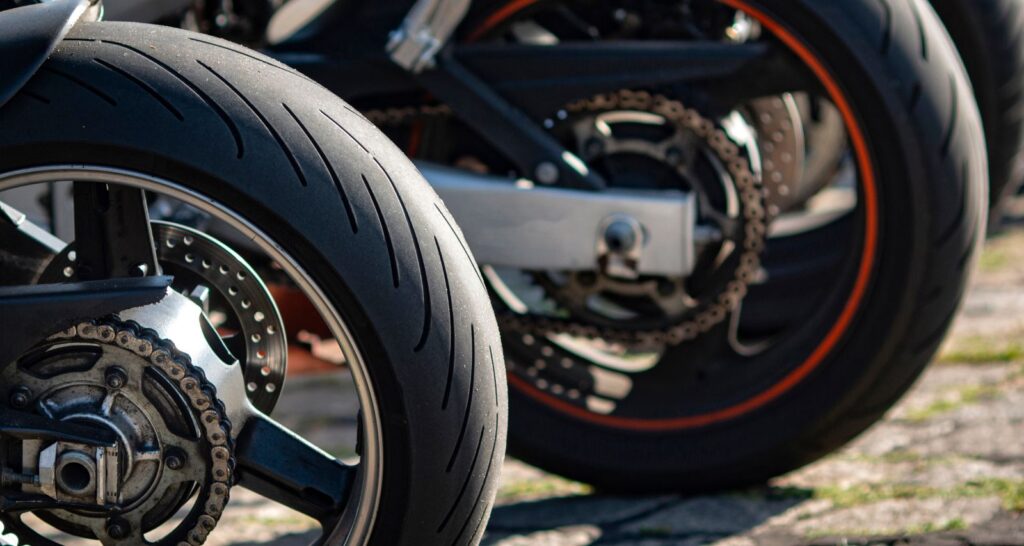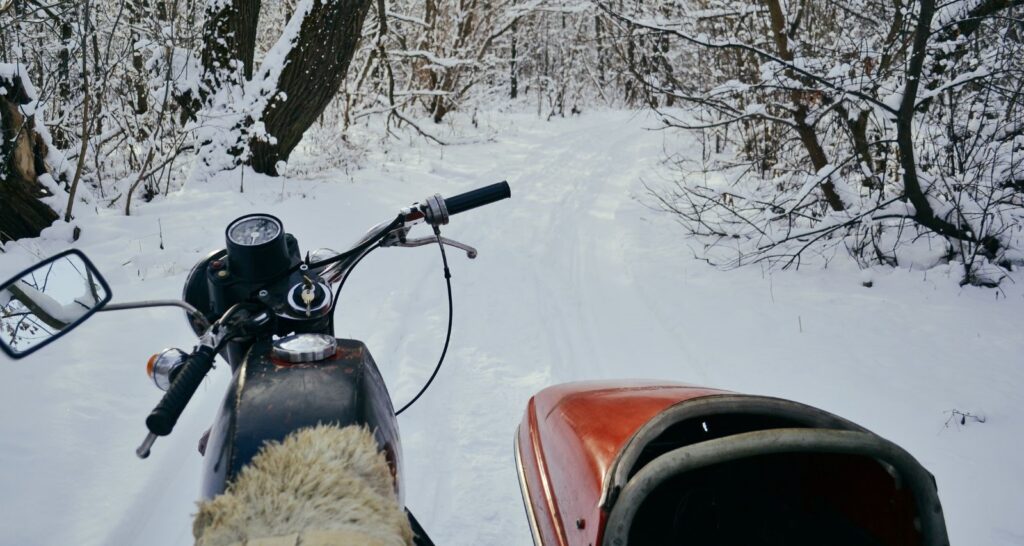Setting out on a motorcycle journey is similar to discovering a realm of boundless adventure, picturesque panoramas, and the pure thrill of the open highway. There’s nothing quite like the thrill of exploring new horizons on your trusty bike. Yet, with this thrilling freedom comes a significant responsibility – being prepared for anything. To ensure your motorcycle trip is a journey of pure enjoyment and safety, we’ll guide you through the art of readiness. As you prepare for your next ride, let’s explore how you can be ready for anything on your motorcycle trip.
Preparing Your Motorcycle: Ensuring Mechanical Reliability
- Regular Maintenance and Servicing: The foundation of a successful motorcycle trip lies in your bike’s mechanical reliability. Prior to your journey, schedule a thorough maintenance check to ensure your motorcycle is in top shape. Regular servicing can help detect and fix potential issues before they become road-side problems.
- Checking Tires, Brakes, and Fluids: Inspect your tires for proper pressure and tread depth. Brake systems, including pads and fluids, must be in prime condition to guarantee your ability to stop safely. Ensure all fluid levels are topped up for optimal performance.
- Carrying Essential Tools and Spare Parts: It’s wise to equip your bike with essential tools like a tire repair kit, multi-tool, and a basic toolkit. Carry spare parts such as fuses, bulbs, and a clutch or brake lever, especially if you’re traveling to remote areas where replacement parts might be scarce.
- The Importance of a Pre-Trip Inspection: Before every ride, conduct a pre-trip inspection. This routine check includes confirming that all lights, indicators, and signals are functioning correctly and that your mirrors are appropriately adjusted.
Packing Smart: Maximizing Space and Efficiency
- Choosing the Right Luggage and Storage Options: Select luggage and storage options that match your trip’s duration and requirements. Motorcycle-specific saddlebags, tank bags, and tail bags can be your best allies. Ensure they are waterproof or equipped with rain covers.
- Packing Essentials and Minimizing Excess: Make a comprehensive packing list and stick to the essentials. Minimize excess weight to enhance your bike’s handling and fuel efficiency. Quality waterproof storage bags or vacuum-sealed packs can help you optimize space.
- Tips for Distributing Weight Effectively: Properly distribute the weight of your luggage to maintain your bike’s balance. Heavier items should be placed at the bottom and centered, while lighter items can be positioned on top.
- Securing Your Cargo Safely: Use sturdy straps, bungee cords, or cargo nets to secure your luggage. Ensure everything is tightly fastened to avoid items coming loose and potentially causing accidents.
Safety Gear: Shielding Yourself for the Ride
- Helmets: Choosing the Right One for Your Trip: Helmets are a non-negotiable safety gear item. Select a helmet that meets safety standards and suits your trip. Full-face helmets offer the most protection and shield your face from wind, debris, and insects.
- Riding Jackets, Gloves, and Protective Clothing: Your choice of riding gear depends on the weather and your route. Invest in a quality riding jacket, gloves, and protective clothing to shield yourself from the elements and potential road rash.
- Motorcycle-Specific Boots: A good pair of motorcycle boots can provide stability and protection. Look for boots with reinforced toe and ankle areas, as well as non-slip soles.
- Protective Accessories and Gear for All Weather Conditions: Equip yourself with additional protective accessories, such as armored pants, knee and elbow protectors, and gear suitable for various weather conditions. Layering is key to stay comfortable and protected in changing weather.
Route Planning and Navigation: Finding Your Way Safely
- Researching and Planning Your Route: Before setting off, research your route, considering factors like road conditions, traffic, and potential detours. Plan for fuel stops, rest areas, and overnight accommodations.
- Using GPS, Maps, and Smartphone Apps: Embrace modern technology by using GPS devices, maps, and smartphone apps designed for motorcycle navigation. These tools offer real-time updates and route planning features.
- Sharing Your Itinerary with a Trusted Contact: Always share your trip itinerary with a trusted contact, so someone knows your whereabouts and expected arrival times. In case of an emergency, having someone aware of your route is invaluable.
- Identifying Potential Rest Stops and Emergency Services: Familiarize yourself with potential rest stops, gas stations, and emergency services along your route. Know where you can find help in case of unexpected situations.
Weather Preparedness: Adapting to the Elements
- Monitoring Weather Forecasts: Check weather forecasts regularly, especially if your trip spans multiple days or includes diverse climates. Prepare for varying weather conditions, from sudden rain showers to temperature drops.
- Packing Appropriate Rain Gear: Even if your trip forecast looks sunny, packing lightweight, waterproof rain gear is a smart move. It can save you from getting drenched in unexpected downpours.
- Dealing with Extreme Temperatures: In hot weather, wear breathable, moisture-wicking clothing and use cooling vests. In cold weather, dress in layers and add heated gear or thermal liners to stay warm.
- Preparing for Unexpected Weather Changes: Remember that weather can change rapidly, especially in mountainous or coastal areas. Always have a backup plan and the right gear to adapt to unforeseen weather shifts.
First Aid and Emergency Kit: Preparedness for Health and Safety
- Assembling a Basic First Aid Kit: A basic first aid kit should include essentials like bandages, antiseptic wipes, pain relievers, and any personal medications. Consider any potential allergies or specific health needs.
- Carrying Essential Emergency Supplies: Beyond first aid, have emergency supplies such as a flashlight, multi-tool, duct tape, a fire starter, and a space blanket. These items can prove invaluable in unexpected situations.
- Communication Tools: Pack essential communication tools such as a cell phone with a fully charged power bank, a two-way radio, or a satellite messenger for remote areas. Ensure that you know how to use these devices.
- Knowing When to Seek Professional Help: Understand your limits and know when it’s time to seek professional help. Don’t hesitate to call for assistance in case of severe injuries, accidents, or mechanical breakdowns.
Personal Safety and Health: Ensuring a Comfortable Journey
- Staying Well-Rested and Hydrated: Maintain your physical and mental well-being by getting sufficient rest and staying hydrated during your trip. Dehydration and exhaustion can lead to poor decision-making.
- Taking Breaks and Avoiding Fatigue: Riding long hours can lead to fatigue. Plan regular breaks for rest, refreshments, and stretching. These breaks not only rejuvenate you but also help maintain focus on the road.
- Strategies for Dealing with Long Hours on the Road: Implement strategies to cope with the mental and physical demands of long hours on the road. Engage in mental exercises and consider using earplugs or a communication system to reduce wind noise.
- Health Considerations, Medications, and Allergies: If you have specific health conditions or allergies, carry necessary medications and ensure your riding companions are aware of your needs.
Handling Mechanical Breakdowns: Troubleshooting on the Road
- Identifying Common Motorcycle Issues: Familiarize yourself with common motorcycle issues, like a flat tire, dead battery, or overheating engine. Knowing the symptoms can help you address problems promptly.
- Basic Troubleshooting and Repair Tips: Learn basic troubleshooting and repair skills, such as changing a tire, jump-starting a dead battery, or fixing a loose chain. These skills can be a game-changer when faced with minor breakdowns.
- Knowing When to Seek Professional Help: While it’s empowering to tackle minor repairs, recognize when an issue requires professional intervention. Don’t push your bike beyond its limits or attempt complex repairs on the road.
- Dealing with Breakdowns in Remote Areas: If you’re traveling through remote areas, be especially cautious. Ensure you have a means of communication, extra water and food, and a contingency plan in case of a significant breakdown.
Dealing with Unforeseen Circumstances: Staying Adaptable
- What to Do in Case of Accidents or Injuries: In case of accidents or injuries, the safety of all riders is paramount. Attend to immediate medical needs and follow proper accident reporting procedures.
- Handling Encounters with Wildlife or Road Hazards: Be prepared for encounters with wildlife, road hazards, and unexpected obstacles. Maintain a safe distance and avoid sudden maneuvers that could result in accidents.
- Coping with Unexpected Road Closures and Detours: Stay adaptable when faced with road closures or detours. Have alternative routes in mind and check for real-time traffic updates on your navigation device.
- Staying Adaptable and Resourceful: Adaptability and resourcefulness are key to overcoming unexpected challenges. Keep a positive mindset and don’t let setbacks derail your journey.
Communication and Contacts: Staying Connected
- Staying in Touch with Family and Friends: Regularly update family and friends about your progress. Share your location, expected arrival times, and any changes to your plans.
- Keeping Emergency Contact Numbers Readily Accessible: Save emergency contact numbers in your phone and have them readily accessible. Pre-program them with “ICE” (In Case of Emergency) tags for easy access.
- Utilizing Motorcycle Clubs and Online Communities: Join local motorcycle clubs or online communities. These groups can provide valuable insights, support, and resources for your journey.
- Local Contacts and Language Considerations: If you’re traveling internationally, it’s essential to have local contacts and a basic understanding of the local language. These connections can be invaluable in navigating unfamiliar territories.
Conclusion
As you prepare for your next motorcycle trip, armed with knowledge and readiness, remember that the open road is an opportunity for exploration, freedom, and adventure. Being ready for anything ensures that your journey is not only memorable but also safe and enjoyable.
For motorcyclists looking to enhance their readiness and explore new destinations with confidence, AA Motorcycle is here to support your journey. AA Motorcycle offers a range of services, from motorcycle shipping to parts and maintenance, to ensure your bike is always in top condition. Their shipping services make it convenient to explore new horizons, while their expertise is a trusted ally for motorcyclists worldwide. With AA Motorcycle, your adventures are seamless and memorable.
So, as you set out on your next motorcycle trip, be prepared, be safe, and embrace the thrilling world of the open road. Whether it’s a short weekend ride or an extended cross-country adventure, your readiness ensures that every mile is a step closer to your next unforgettable experience.
With these tips, you can be ready for anything that comes your way while taking a road trip on your bike. Get quick, affordable quotes from AA Motorcycle Shipping when planning your route.




